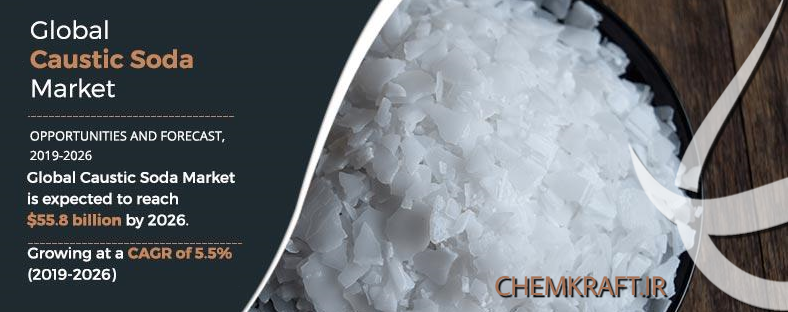1. Introduction to the Caustic Soda Market
The caustic soda market plays a vital role in numerous industries, including chemicals, pulp and paper, textiles, and water treatment. However, the stability and profitability of this market are heavily influenced by the fluctuating prices of its raw materials. This article aims to explore the impact of raw material prices on the caustic soda market, delving into the various factors that influence these prices, current trends, and the implications for the industry. Additionally, it will examine the economic and industrial factors affecting caustic soda demand, strategies to mitigate raw material price risks, and provide insights into the future outlook of raw material prices and the caustic soda market. Understanding these intricate dynamics is essential for industry stakeholders to make informed decisions and navigate the ever-changing landscape of the caustic soda market.
1. Introduction to the Caustic Soda Market
Definition and Overview of Caustic Soda
Caustic soda, also known as sodium hydroxide (NaOH), is a versatile chemical compound that is used extensively in various industries. It is a strong alkaline substance, usually available in solid form or as a concentrated liquid solution. Caustic soda is highly corrosive and can cause severe burns if mishandled.
Applications and Importance of Caustic Soda
Caustic soda plays a crucial role in numerous industrial processes. It is a key ingredient in the manufacturing of various products, ranging from paper and textiles to soaps and detergents. It is widely used in the production of aluminum, chemicals, and petroleum products. Additionally, caustic soda is used in water treatment plants and plays a vital role in pH regulation in industries and households.
Caustic soda’s significance cannot be understated, as it serves as a fundamental building block for many industries and applications.
2. Factors Influencing Raw Material Prices
Supply and Demand Dynamics
Like any other commodity, raw material prices for caustic soda are influenced by supply and demand dynamics. If the demand for caustic soda increases and there is limited supply, prices tend to rise. Conversely, if the demand decreases or supply increases, prices may go down.
Geopolitical Factors
Geopolitical factors can also impact raw material prices. Political instability, trade disputes, and sanctions on key caustic soda-producing regions can disrupt the supply chain, leading to price fluctuations.
Environmental and Regulatory Factors
Environmental regulations and sustainability initiatives play a significant role in the pricing of raw materials. Stringent regulations on the production and disposal of caustic soda can increase manufacturing costs, thereby impacting prices.
3. Current Trends in Raw Material Prices
Historical Price Analysis
Analyzing historical price data allows us to understand patterns and trends in raw material prices for caustic soda. This analysis helps forecast future price movements and enables market participants to make informed decisions.
Recent Price Volatility
In recent years, the caustic soda market has experienced price volatility due to various factors. Fluctuations in feedstock prices, changes in global demand, and geopolitical events have contributed to volatility, making it challenging for market participants to predict price movements accurately.
Key Market Influences on Raw Material Prices
Factors such as energy costs, transportation expenses, and the availability of feedstock influence the pricing of raw materials. Market dynamics, such as mergers and acquisitions, capacity expansions, and new entrants, can also impact raw material prices.
4. Implications of Raw Material Price Fluctuations on Caustic Soda Market
Profitability and Margins
Raw material price fluctuations directly affect the profitability and margins of caustic soda manufacturers. When raw material prices increase, manufacturers may struggle to maintain profit margins unless they can pass on the cost to customers.
Competitiveness and Pricing Strategies
Price fluctuations can also impact the competitiveness of caustic soda producers. Companies must carefully analyze market trends and adjust their pricing strategies to remain competitive while maintaining profitability.
Investment and Expansion Decisions
Raw material price fluctuations can influence investment and expansion decisions in the caustic soda industry. Periods of low raw material prices may provide opportunities for companies to invest in capacity expansions, while high prices may lead to cautious decision-making.
In conclusion, understanding the impact of raw material prices is essential for participants in the caustic soda market. By keeping track of key market influences and trends, companies can navigate the challenges and make informed decisions to ensure their long-term success in this dynamic industry.
5. Economic and Industrial Factors Affecting Caustic Soda Demand
Global Economic Growth and GDP
When it comes to caustic soda demand, the global economy plays a significant role. As the GDP of countries grows, so does the need for caustic soda in various industries. Economic growth usually translates into increased construction projects, manufacturing activities, and infrastructure development, all of which require caustic soda. Therefore, keeping an eye on global economic indicators can help us gauge the demand for caustic soda.
End-User Industries and Consumption Patterns
Understanding the consumption patterns of industries that rely heavily on caustic soda is vital for assessing demand. Sectors like pulp and paper, textiles, detergents, and chemicals are major consumers of caustic soda. Monitoring the growth and trends in these industries can provide valuable insights into the future demand for caustic soda.

Substitutes and Alternative Products
Caustic soda has its competitors in the market. Substitutes such as sodium carbonate and potassium hydroxide can serve similar purposes in certain applications. The availability and relative price of these alternative products can influence the demand for caustic soda. Keeping an eye on the developments and advancements in substitute products can help us anticipate changes in caustic soda demand.
6. Strategies for Mitigating Raw Material Price Risks in Caustic Soda Industry
Diversification of Supply Sources
To mitigate the risks associated with fluctuating raw material prices, caustic soda manufacturers can diversify their supply sources. Relying on multiple suppliers helps reduce dependency on a single source and provides the flexibility to negotiate better prices and terms, ensuring a stable supply chain.
Long-Term Contracts and Hedging
Another strategy to mitigate raw material price risks is entering into long-term contracts with suppliers. Longer contracts provide stability and security by locking in prices for a specific duration. Additionally, implementing hedging strategies, such as futures or options contracts, can help caustic soda manufacturers protect themselves from price volatility.
Technological Innovations and Process Optimization
Embracing technological advancements and optimizing manufacturing processes can help caustic soda manufacturers reduce production costs and increase efficiency. By finding innovative ways to extract raw materials or improving energy consumption during production, manufacturers can offset the impact of rising raw material prices.
7. Future Outlook and Predictions for Raw Material Prices and Caustic Soda Market
Forecasts and Projections
While predicting raw material prices with absolute certainty is a challenging task, experts use various methods and indicators to make informed forecasts. These forecasts can help caustic soda manufacturers and investors anticipate price trends and make informed decisions regarding production levels and investments.
Emerging Trends and Market Opportunities
An analysis of emerging trends in industries that rely on caustic soda can provide valuable insights into future market opportunities. Identifying new applications or potential growth sectors can help caustic soda manufacturers position themselves strategically and capture a larger market share.
Risk Assessment and Mitigation Strategies
Evaluating the potential risks associated with raw material price fluctuations is essential for the caustic soda industry. By assessing market risks and implementing effective mitigation strategies, manufacturers can navigate uncertain times more confidently and protect their bottom line.
8. Conclusion and Key Takeaways
In conclusion, the impact of raw material prices on the caustic soda market cannot be ignored. Economic factors, consumption patterns, and substitutes play crucial roles in determining the demand for caustic soda. To mitigate the risks posed by fluctuating raw material prices, diversification of supply sources, long-term contracts, and technological innovations are effective strategies. By staying informed about future price projections and market trends, caustic soda manufacturers can seize opportunities and proactively manage risks. Ultimately, adapting to the ever-changing market dynamics is key to maintaining a competitive edge in the caustic soda industry.
8. Conclusion and Key Takeaways
In conclusion, the impact of raw material prices on the caustic soda market is undeniable. Fluctuations in raw material costs have a significant influence on the profitability, competitiveness, and investment decisions within the industry. It is crucial for market participants to closely monitor and analyze the factors influencing raw material prices, such as supply and demand dynamics, geopolitical factors, and regulatory changes. Implementing strategies to mitigate price risks, such as diversifying supply sources and utilizing long-term contracts, can help safeguard against market volatility. By staying informed about emerging trends and upcoming opportunities, industry players can position themselves for success in the caustic soda market.
FAQ
1. What are the main factors influencing raw material prices in the caustic soda market?
The main factors influencing raw material prices in the caustic soda market include supply and demand dynamics, geopolitical factors, and environmental and regulatory changes. Understanding these factors is crucial for predicting and managing price fluctuations.
2. How do fluctuations in raw material prices impact the profitability of the caustic soda industry?
Fluctuations in raw material prices directly impact the profitability of the caustic soda industry. When raw material prices increase, it puts upward pressure on production costs, potentially lowering profit margins. Conversely, decreases in raw material prices can improve profitability by reducing input costs.
3. What are some strategies that companies in the caustic soda industry can employ to mitigate price risks?
Companies in the caustic soda industry can employ various strategies to mitigate price risks. These include diversifying supply sources to reduce dependence on a single supplier, entering into long-term contracts to secure stable pricing, and exploring technological innovations and process optimization to improve efficiency and reduce costs.
4. What is the future outlook for raw material prices and the caustic soda market?
The future outlook for raw material prices and the caustic soda market is subject to various factors and uncertainties. It is recommended to closely monitor market trends, forecasts, and emerging opportunities. Additionally, conducting a risk assessment and implementing appropriate mitigation strategies can help navigate the ever-evolving landscape of the caustic soda market.











